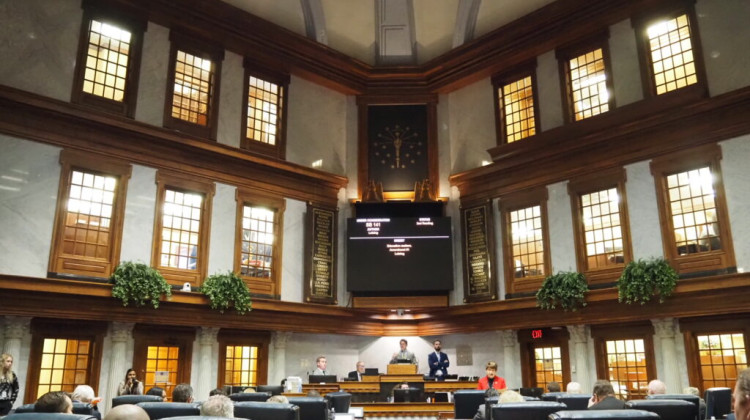
More than 30 percent of the state’s working-age population still isn’t working or looking for work, according to new preliminary estimates.
IPB News file photoIndiana’s labor market appeared to remain stagnantly tight in July, according to new preliminary federal estimates from the Bureau of Labor Statistics.
Indiana’s 3.3 percent July unemployment rate is still near record lows for the state.
It's a slight increase from the 3 percent to 3.2 percent range of unemployment rates over the past few months, but that month-over-month increase is not statistically significant and could be revised down or up in next month's estimates since these numbers are only preliminary.
Indiana is one of only four states where the total number of non-farm workers grew. The increase was small but statistically significant.
Despite that growth and an employment total near record highs for most of the year, more than 30 percent of the state’s working-age population still isn’t working or looking for work.
The estimates don’t provide an explanation for that or any other labor metrics.
Indiana’s manufacturing workforce shrunk slightly last month compared to July 2022. That’s the fourth straight month of year-over-year losses in that sector.
The state’s information industry — which includes librarians and computer programmers — has posted more significant year-over-year losses each month since 2023 began.
Important notes about the data
There are a few important things to know about the state and local labor market data the federal Bureau of Labor Statistics releases every month.
They're old numbers. They measure the labor market a month or two months prior — not the current market.
Also, the data are estimates. So while these are often the best numbers available, there is room for error. The newest estimates are always preliminary — meaning they're rechecked and potentially revised in the next month's release.
But those revisions aren’t always perfect either. BLS sometimes re-revises the monthly numbers years later. For example, the estimated unemployment, employment and labor force numbers at the state and local level for every month between January 2018 and December 2021 was revised again in March 2023.
And some estimates are not seasonally adjusted, meaning they don’t account for the natural ups and downs of the labor market that come with any part of the year – like seasonal jobs that only exist in the summer.
That means the non-seasonally adjusted unemployment rate for January, for example, can’t be compared to the December rate. But non-seasonally adjusted January rates can be compared to every January in prior years. This mostly affects local-level estimates, as most statewide estimates in these monthly releases are seasonally adjusted.
Adam is our labor and employment reporter. Contact him at arayes@wvpe.org or follow him on Twitter at @arayesIPB.
9(MDAyMzk1MzA4MDE2MjY3OTY1MjM5ZDJjYQ000))
 DONATE
DONATE






 Support WFYI. We can't do it without you.
Support WFYI. We can't do it without you.